How Much Does Underfloor Heating Cost to Install and Run?
Before making a decision for a planned building project or renovation, you may want to think about underfloor heating costs. To assist you in this, we’ve provided some specialist information on the costs involved with installing and running the different types of UFH systems, as well as information relating to the options you have for solar-powered underfloor heating.
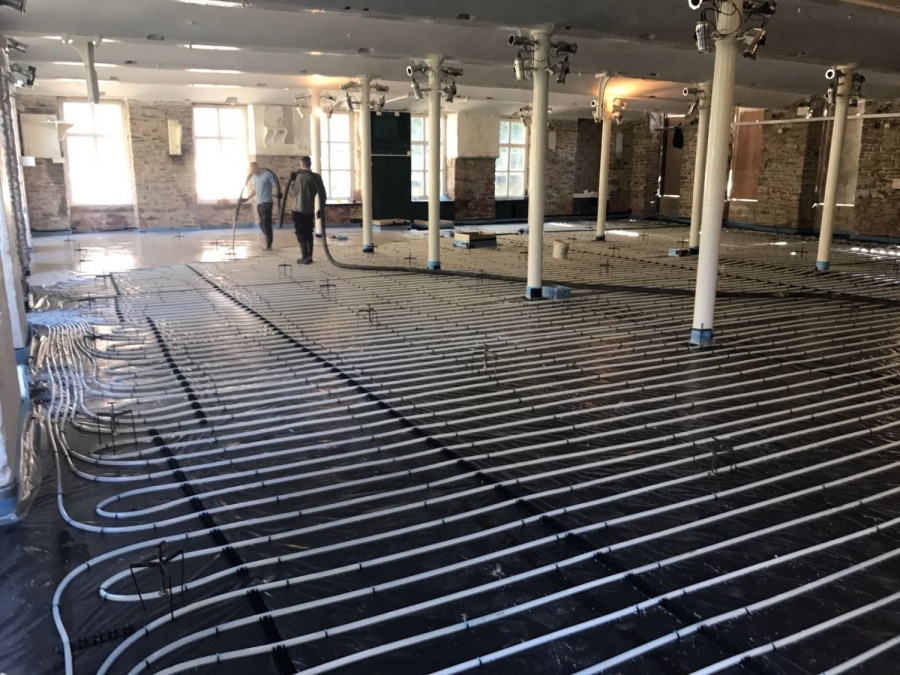
How Much Does Underfloor Heating Cost?
Underfloor heating costs can vary greatly, depending on the most efficient solution for the property involved. This means some small projects may start at £200, while other, larger installations may exceed £10,000. There are a few factors that can help to determine the overall cost of any system you are preparing to install:
- The size of the room you’re fitting the system in (per m2)
- The age of the building being fitted with a UFH system
- Whether you’re fitting a wet system or an electric system
Both warm water underfloor heating and electric underfloor heating systems can provide effective, evenly distributed warmth and comfort for property owners and users. If you would like to learn more about these different types, see more in-depth information on how they work, and find out what they can bring to your planned project in general, please see our advice page on underfloor heating.
Other Factors that Affect Costs
It is also possible for the type of insulation used in the property and the thermostat installed to affect the cost of underfloor heating. The thermostat will regulate the timing of the heat output, while high-quality insulation will allow the system to distribute a higher heat yield that ensures energy efficiency by keeping the property warmer for longer.
Retrofit Underfloor Heating Costs and Materials
Fitting underfloor heating as part of a renovation project will often cost more than installing a system as part of a new build. This is because more materials will need to be supplied with any type of retrofit system (whether you are installing wet underfloor heating or electric underfloor heating). The process will also be more labour-intensive, as you will have to remove the original floor coverings before work can begin.
Prices for electric foil film (for electric underfloor heating systems) usually start at around £50 per m2, excluding the cost of a thermostat. Wet underfloor heating systems, on the other hand, will usually be priced at £40 per m2. This price excludes fitting charges and the price of extra equipment required.
Generally, you can expect the materials for a retrofit electric underfloor heating system to cost upwards of £3,500, depending on the size of the room or rooms you are renovating. Warm water underfloor heating systems for renovated properties will cost more than this, and may exceed £8,500-£,9000.
New Build Underfloor Heating Costs and Materials
Installing underfloor heating in a completely new build is often the most practical and cost-effective choice, as it can be fit neatly into a building schedule under a range of floor finishes. Pairing an underfloor heating system and screed is often the most popular choice, as the installation of the material prevents gaps and cold spots in the flooring, helping to create an even distribution of heat. This is especially useful in rooms that often need help retaining heat, such as bathrooms.
In a new build, you can expect the materials needed to fit an electric underfloor heating system to cost between £2,100 and £3,000. A wet underfloor heating system for the same property will normally be £4,800 or more.
Labour and Installation Costs for Underfloor Heating Systems
Once you have decided on a system type and are aware of its price, the next factor to take into consideration will be labour costs. The work should always be carried out by a specialist UFH contractor with years of experience in the supply and installation of systems, with installation costs based on the size of the area being fitted, the age of the property, and the type of system being installed.
It is also possible that installation costs may be affected by some other factors:
- The type of floor cover you intend to use
- The overall state of the property
- How many days the system takes to install
Labour costs for professional UFH contractors will vary, but you may expect prices to range between:
- £200 and £500 for an electric underfloor heating system in a new build
- £500 and £800 for a retrofit electric underfloor heating system
- £900 and £1,500 for a hot water underfloor heating system in a new build
- £1,200 and £1,700 for a retrofit wet underfloor heating system
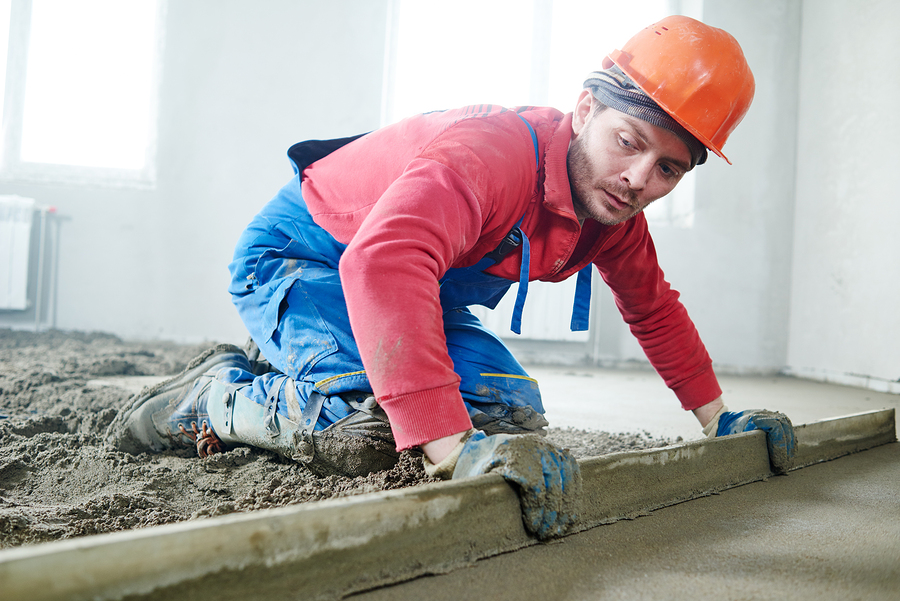
Running Costs for Underfloor Heating Systems
Running costs for underfloor heating systems may fluctuate over time, and will differ in terms of amount between individual properties and different system types. Boiler and heat pump types can also have an effect on how much your own system will cost to run.
Wet underfloor heating systems are more often cheaper than dry, owing to the cost per unit difference between electricity and gas or oil. They also have lower running costs than both electric UFH systems and traditional radiators, while offering an efficiency level of around 25% when paired with a modern condensing boiler. This increases to 40% when the system is running from a heat pump.
A dry system may cost more to run (often up to four times more than a water-based system) but they are also a very efficient option for small spaces, such as a bathroom or a refurbished kitchen, as they are capable of transferring heat more quickly in smaller areas.
Advice on Running Costs for UFH Systems
Both floor heating types can be regulated in order to minimise unnecessary heat usage, and leaving your system on for long periods of time is not recommended in most cases. The only exception to this might be during the cold winter months, though this will also depend on individual circumstances.
Underfloor heating can also take several hours to warm up, so turning it down rather than switching it off completely is advisable when the weather is colder. This has even been determined to save property owners as much as £10 a year for each degree reduced.
Underfloor Heating Costs: Wet Systems vs Electric Systems
The type of system you should choose for your property will all depend on your project’s needs and individual circumstances. We should note, however, that hot water underfloor heating systems will cost more to install, both for renovations and new builds, while electric underfloor heating systems will have higher running costs.
The combined materials, installation, and labour costs for UFH systems will generally be between:
- £2,000 and £2,600 for an electric system in a new build
- £4,000 and £4,500 for a retrofit electric system
- £5,500 and £6,500 for a wet system in a new build
- £9,750 and £11,000 for a retrofit wet system
Using Solar Powered Underfloor Heating
Solar-powered underfloor heating is also a possibility for many properties based across the UK. This involves using solar PV panels and converting solar energy into electricity, which can then be used to power appliances. By installing a solar thermal store cylinder, you can combine your floor heating with the mains pressure hot water. These cylinders are designed to work with solar panels and a boiler, but can also be adapted to take additional heat sources.
Water in the thermal store cylinder will be heated to between 60°C and 70°C and there are two thermal coils within the thermal store that are linked. The mains water will enter the bottom coil and circulate through until it reaches the desired temperature at the top.
There are also two tappings in the thermal store in order to provide heat for a UFH system. The solar coil can be found at the lowest part of the thermal store, as this is the coolest area of the system. This is because it is not heated by the boiler and is cooled further by cold water coming from the mains and the domestic hot water coil. In turn, this then allows for a higher contribution from solar energy towards heating a property.
How Solar Powered Underfloor Heating Reduces Costs
As solar energy allows a property to be powered with less reliance on utility providers, it also aids in reducing the cost of energy bills. Combined with the energy efficiency already provided by an underfloor heating system, this may mean that the amount a homeowner pays over the course of a year could be significantly reduced.

Contacting a Professional Underfloor Heating Contractor
If you have been looking at underfloor heating for your planned work project and believe that screed is the ideal material for achieving maximum thermal efficiency and a stylish floor finish, contact Screed It and let us know what you need today. We can provide you with an instant quote online for the water-based UFH system that covers everything you’ve asked for, before getting it installed exactly as you have asked for it in time to meet your deadline.
One of our members of staff will be waiting to discuss what you need as soon as you get in touch, so we can help you move on to the next part of your project while keeping you firmly within your budget.
- Categories:
- Blog
Underfloor Heating: What is it, How it Works & the Different Types
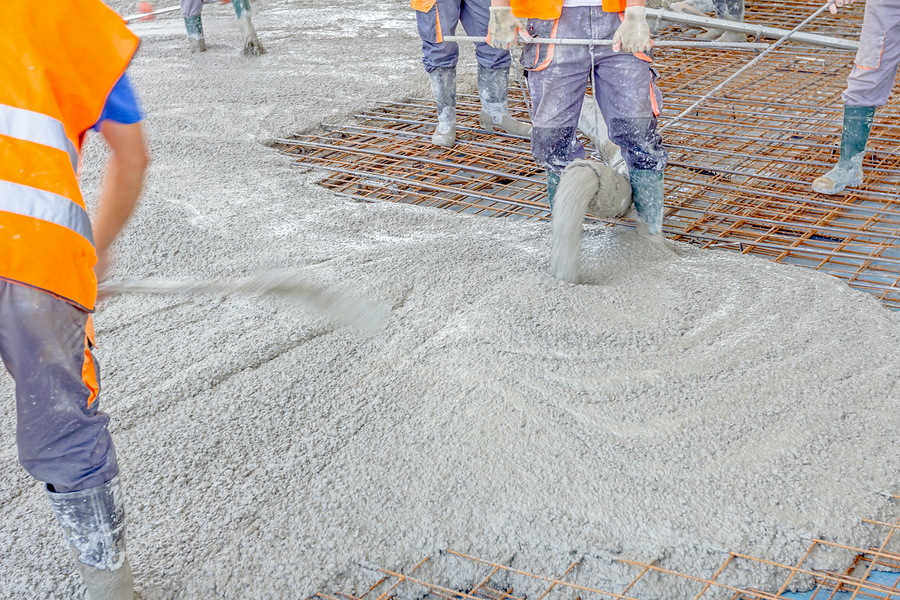
Here at Screed It, we understand that you’ll want to make the best, most informed decision possible before carrying out any work on a flooring project. This is why we’ve brought together this specialist information on the types of underfloor heating, how they work, and what should be done to keep them running once they’ve been installed.
What is Underfloor Heating?
Underfloor heating (sometimes abbreviated to UFH) is a method of heating any interior space by generating and distributing heat underneath the floors of the property. It can be used as a secondary heating system, or it can even become the primary system and replace traditional radiators as the main heat source of a property.
Types of Underfloor Heating
There are two types of underfloor heating available for work projects and renovations, electric or “dry” underfloor heating systems and hot water or “wet” underfloor heating systems. Which type of system you choose will be your decision, though you may wish to consider factors such as running costs, any deadlines you have for installations or renovation work, and how much space you have available for your system in the room where it should be installed.
To give an example, if you are looking to complete the floor of a new build you may want to look at having a wet underfloor heating system installed, as these are designed to heat larger spaces and are generally more cost-effective than electric systems. However, if you need a smaller space covered or need to renovate a property that has already been built, then electric underfloor heating is the better fit and will also be less disruptive to install.
What Temperature Does Underfloor Heating Run At?
The running temperature of underfloor heating will vary, depending on the needs and wishes of the property owner. However, BS EN 1264-2[1] limits the maximum floor surface temperature to 29°C, or to 27°C where floor tiling is proposed. In most living areas, it is suggested that 21°C will keep the temperature in the room comfortable, while bedrooms are set slightly lower (usually around 18°C).
The water that flows through a wet underfloor heating system’s pipes will vary between 35°C and 60°C, depending on heat loss from the building. The temperature you set the system at may vary between these, depending on the type of flooring you have installed above the pipes or wire layout.
Turning the temperature down by a single degree on your underfloor heating system could also help to keep it energy-efficient, while never compromising on the comfort of the room’s occupants.
How Does Underfloor Heating Work?

Once you’ve decided to install underfloor heating as part of your work project, the next step should be to make sure you know how it works. This helps you to make the most informed decision for your work and ensures the system you’re using is the most efficient one for your property’s needs.
A typical S-plan underfloor heating system works by evenly distributing heat throughout the flooring of a property. Often, a material such as screed will be laid over it to seal any potential air pockets, which keeps the heat distribution even and makes the system more efficient. The temperature is then monitored by a thermostat to make sure it is kept at a consistent level.
How the heat is distributed will all depend on which type of underfloor heating you have:
Electric Underfloor Heating
An electric system makes use of an ultra-thin wire that is then installed underneath the floor level. The wire is then heated, and the heat transfers outwards.
Wet Underfloor Heating
Wet underfloor heating systems are made up of a complicated pipe layout that can come in a number of different designs. These designs are created to ensure the most efficient and even transfer of heat in a room, though some designs may achieve this more effectively than others. Hot or warm water is then pumped through these pipes, which will also become hot and transmit the heat to the room through the rest of the floor.
You can use any central heating source in a property to provide hot water for a wet underfloor heating system. These include:
- Biomass boilers
- Combination boilers
- Condensing boilers
- Heat pumps
- Standard boilers
- Stoves
What Type of Flooring is Best for Underfloor Heating?
The best type of flooring for underfloor heating is one that makes the most of the potential heat transfer. Hard surfaces such as screed, stone, engineered wood, or ceramic tiles are the most thermally conductive and would therefore offer the best heat transfer. However, there are a number of other options you might want for your property that will also work.
Other flooring options that you may want to consider for your property once underfloor heating has been installed include:
- Carpets
- Linoleum
- Resin
- Vinyl
Caring for Your Underfloor Heating System

Once an underfloor heating system has been installed you should keep in mind how it will need to be maintained. This differs depending on which type of underfloor heating you have installed under your property. Hot water underfloor heating systems, for instance, will need to be regularly flushed out because sludge and rust can build up inside them over time.
To do this, you’ll first need a pump that’s suitable for your boiler. This needs to be fitted to your system so that it sends a flush of chemicals through the pipework and clears out any corrosion, sludge debris or rust. This should keep the system in its full working order.
Electric underfloor heating systems, on the other hand, should not need frequent servicing. However, we do suggest having them checked over by a specialist engineer so that you know your system is working to its utmost efficiency and is not in need of any repair work.
Contacting a Specialist Underfloor Heating Contractor
If you have been considering screed flooring for a planned work project and you believe the finished result would also benefit from an underfloor heating system being installed, contact our team at Screed It today. We’ll be ready to provide the wet system that suits all your needs, and can have it installed exactly as you need it underneath the floor coverings required by the terms of your project. We’ll also be happy to carry this out anywhere in the UK, so you may rest assured that you’ll never be out of reach of our service.
One of our staff members will be waiting to discuss your options when you get in touch with us. They will be able to help you make the best decision for your flooring, so you can feel confident in placing an order and arranging a date for installation.
- Categories:
- Blog
Our Advice on Underfloor Heating and Screed
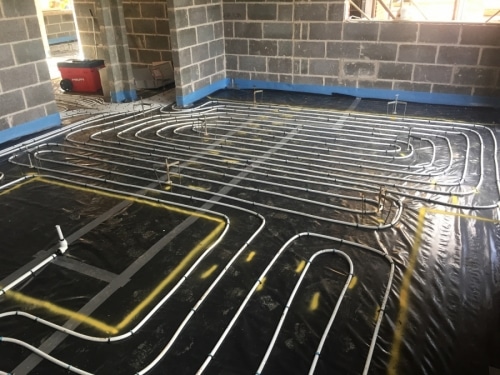
At Screed It, we understand the need to keep any work scheduled for a project as quick, efficient, and cost-effective as possible. That is why we’ve provided some professional advice on underfloor heating and screed, how the two should be installed together (including minimum and maximum levels of screed thickness), and what you can do to ensure best practice when carrying out the work.
What is Underfloor Heating?
Underfloor heating (UFH) is a method of heating any interior space by generating heat underneath the floors of the property. It can be used simply to warm up the floor or it may even replace radiator systems entirely and become the primary source of heat indoors.
When you install underfloor heating, you will normally have the option of two system types. These are electrical systems and water systems. An electrical underfloor heating system will use cables to generate heat, while water-based underfloor heating systems will pump heated water through a series of pipes underneath your top floor layer.
Installing UFH Systems Underneath Screed
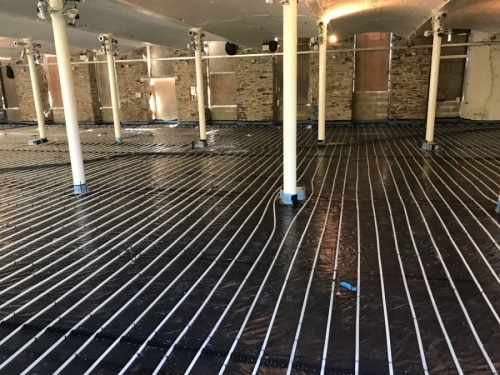
Starting from the bottom, a subfloor will consist of either a concrete slab or a beam and block which is then insulated by a waterproof membrane. This membrane should then be covered with a layer of thermal insulation. In most cases, this will either be polystyrene or mineral wool. There may also be occasions where it will be necessary to fit vapour insulation over the original thermal insulation layer.
After this, the underfloor heating pipes can be fitted. These should be laid on the floor evenly, avoiding sharp bends if possible (as water-based pipes will need to maintain a free flow), and set out in a loop to ensure an even distribution of heat. The pipes should be fitted to the underlay with clips.
Once everything is in place and prepared, it will then be possible to install the screed mix that’s been chosen for the floor. This will then be left to dry, and a flooring of the homeowner or contractor’s choice can be laid to cover it over. Some may also choose to leave the screed exposed, as a stylish floor finish.
What is the Best Screed for Underfloor Heating?
There are two types of screed that can be installed around underfloor heating. Neither can be considered “best” for an underfloor heating installation, as they offer the same advantages when installed correctly. However, when considering an installation, you should always take into account the type of screed being used in order to allow room for thermal movement and expansion in the pipes.
We have provided some more information on the two types of floor screed mix below:
Traditional Floor Screed
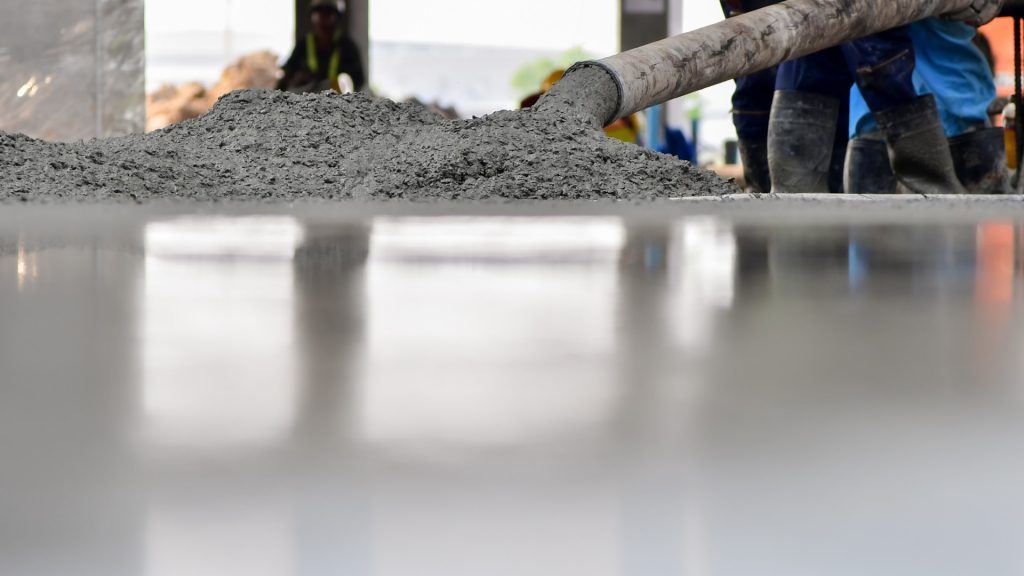
Traditional sand and cement screeds, also called “dry screeds”, are a mix of coarse sand and cement. The ratio of sand to cement may vary depending on the contractor, but the average is normally noted as a 4:1 ratio mix. It also needs enough water to reach the required consistency without getting so wet that it will produce more than a few drops of moisture when squeezed.
Drying times for traditional types of screed will normally range between five and seven days.
A traditional floor screed will need a minimum of 28 days before the heating can be switched on, and the UFH system should be run at a low temperature at first to let the screed heat up. This assists in completing the cure before the heating is brought up to its full running temperature.
Liquid Screed
Also known as “flowing screeds”, liquid screeds are often considered a faster, more efficient alternative to traditional sand and cement screeds. This is because liquid screed can be supplied to a building project and simply poured into the space it needs to be installed. From there, the compound mix will harden by itself and form a smooth, flat surface. This is why they are often called self-levelling screeds as well.
If you are looking to finish a work project quickly, liquid screed is often the best choice. It can often be walked on within 24 to 48 hours of being installed, though it will take longer to cure than traditional screed.
Underfloor Heating and Screed Depth
It is especially important to keep to the recommended thickness of a screed layer, as the depth of the pipe determines how effectively the UFH system will distribute its heat. The thickness of the layer also varies, depending on whether you are using traditional sand and cement screed or liquid screed.
Ideally, a traditional sand and cement screed will have a minimum thickness of 65mm and a maximum thickness of 75mm. No matter the measurement chosen, this should be consistent throughout the work to keep the heat distribution the same.
As liquid floor screed can be installed in thinner layers than traditional screed, the minimum depth of the layer can be as little as 50mm or 55mm.
Preventing Issues with Underfloor Heating and Screed
When installing underfloor heating and covering it with a screed layer, there are a few other points to follow to ensure best practice:
- You should ensure that the process takes installations that penetrate floors into account
- You should always be aware of the maximum temperature of the floor surface, particularly if you are planning to install tiles above the screed
- Insulating the primary pipework and the manifold assemblies is highly recommended
- You should also be sure to locate the manifold assemblies so that they are easily accessed
- The correct labelling should be applied to all features in a UFH system, in order to keep inspections and maintenance efficient
- Joints between the manifold and pipework should be accommodated above the level of screed for easy maintenance
- Manifolds should be located at an appropriate height above the floor, securely fastened to the wall
- All external doors and windows should be installed before any UFH system, so that the property is watertight and the system is protected from frost
- The spacing and layout of the pipework should be even, but may be reduced around the external perimeter of rooms to compensate for additional heat loss that often occurs in these areas. Insulation will need to be installed from the floor to the edge of the walls
Underfloor heating pipes can be laid out in several patterns. The most appropriate layout for any particular system should be confirmed by the manufacturer.
If you don’t have the necessary experience to install underfloor heating with a screed layer to finish, we would strongly recommend calling a specialist service to undertake the work for you. This ensures that the work is handled correctly and will save you time and money that might otherwise be spent ripping up the screed floor and uninstalling the system if it goes wrong.
Contacting a Professional Screeding Service
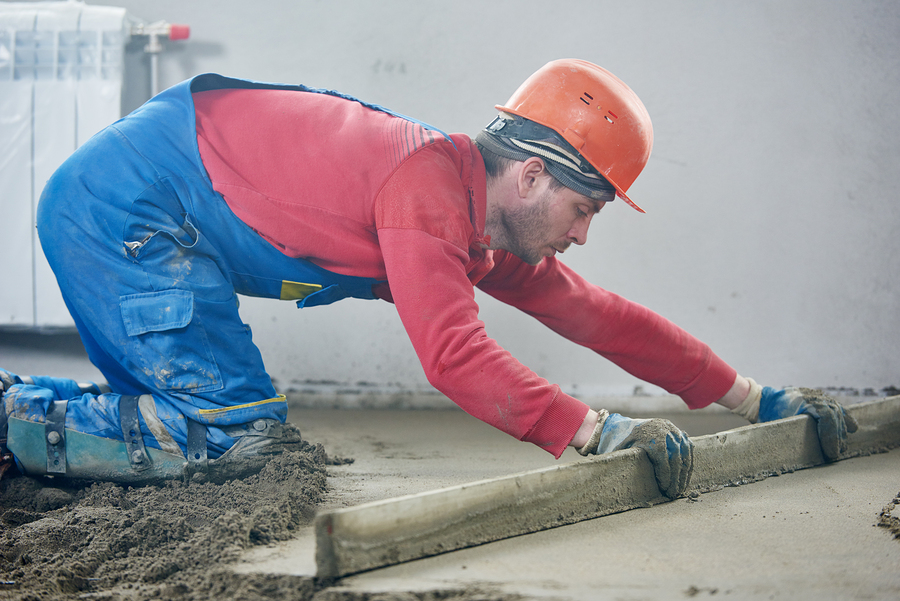
If you are in need of fast and efficient screeding and underfloor heating services to complete your work project, contact Screed It today. We’ll do everything we can to provide you with the wet UFH system that keeps any property at its most comfortable temperature, and can ensure an installation is carried out exactly as you need. We will then finish the flooring with a layer of screed that suits the needs of your planned work.
We’ll be happy to carry out this work anywhere in the UK, and one of our members of staff will be ready and waiting to discuss everything you need as soon as you get in touch.
- Categories:
- Blog
An Expert Guide to Your Underfloor Heating System
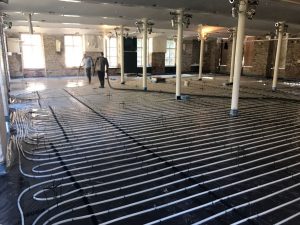
A popular feature for a property’s floor in the modern day is the underfloor heating system. At Screed It, specialise in providing building projects with underfloor heating, alongside traditional and liquid forms of screed.
We’ve also put together this professional guide on underfloor heating so that you can be fully informed before you decide if you’d like this feature for your property.
What is an Underfloor Heating System?
Underfloor heating is a modern system of central heating and cooling, using either electricity through a series of thin wires or hot water in pipes to evenly distribute heat through a property’s floor.
In many cases, the pipes and wires used in underfloor heating will be set out in what is known as “S-plan”, as this shape of system is familiar to both plumbers and electricians.
How Underfloor Heating Systems Work
When you’re considering installing a new feature in a property, you will naturally want to know how it works first, so that you can then decide if the feature is suitable for your project and intentions. An S-plan underfloor heating system works by evenly distributing heat throughout your flooring, often taking advantage of the lack of air pockets in flooring material such as screed in order to ensure this is achieved. The heat level is then monitored by a thermostat in order to maintain a consistent temperature.
How systems work to distribute heat will all depend on whether your underfloor heating is wet or electric:
Wet Underfloor Heating Systems
Systems that use hot water to transfer heat into a room will allow this water to flow through a circuit of pipes underneath the finished floor design. The pipe layouts will then become hot, allowing for the heat to be transmitted to the room through the rest of the floor.
Any central heating source may be used for wet underfloor heating, including:
- Standard boilers
- Combination boilers
- Condensing boilers
- Biomass boilers
- Heat pumps
- Stoves
Electric Underfloor Heating Systems
Electric underfloor heating systems have an ultra-thin wire that will be installed underneath your flooring. This thin wire then heats up, serving the same purpose as the underfloor heating pipe for a hot water heating design.
The Benefits of Having an Underfloor Heating System

For many homeowners, no one will have explained all the benefits of having an underfloor heating system installed underneath their floor finish. There are many advantages to having this type of system installed for your property, which we have listed here:
- They allow for increased energy efficiency, by regulating temperature and ensuring that homeowners can turn down the thermostat on their central heating
- Their energy-efficient nature means that more money is saved from energy bills
- They will still be fully efficient underneath any floor layer added on top, whether you choose to put down tiles, carpet or timber flooring
- Water varieties will only need a minimal amount of maintenance, in the form of a regular flush and pressure testing
- Underfloor heating minimises the amount of dust circulated in a property, making them more comfortable for those with allergies or asthma
- S-plan systems in particular can make a property feel more comfortable in terms of temperature, as the heat is evenly distributed across the whole floor
- Damp and dust are eliminated, making them more hygienic
- They free up space by removing the need for radiator systems
How to Flush an Underfloor Heating System
Owing to how it works, you will need to regularly flush out any underfloor heating system that uses water. Like central heating systems, these pipes may have sludge and rust build up inside them over a long period of time and will need to be cleaned out in order to be kept in their best working condition. When this happens, you will have to power flush your system.
The process involves fitting a pump (the type that is best suited to your boiler) to your system, before sending cleaning chemicals through your pipes. This should clear them of any corrosion, sludge debris or rust that may have been preventing the system from working properly.
We do recommend that this work is carried out by an experienced professional, in order to ensure that the flush is performed correctly and safely.
Underfloor Heating Costs
The costs involved when you have an underfloor heating system can vary greatly, especially when the installation and overall running costs are also taken into account. Depending on the size of the area you have fitted your pipes or thin electrical wires, as well as daily and seasonal usage, the price you pay for your underfloor heating may fluctuate over time.
This difference will be especially prominent during summer and winter months, as the running costs will be lower in the months where you can safely turn the system off without feeling too cold in your home.
Contact Us for the Best Heating System for Your Property

If you have been looking at screed flooring for your property and you believe that your work project would benefit from a hot water-based underfloor heating system as well, get in touch with Screed It today. We’ll do everything we can to ensure that your wet system is delivered and installed exactly as you need it, underneath your planned floor coverings. We can do this anywhere in the UK, so there is no need to hesitate when you need a heating system with a wet design.
One of our staff will be happy to discuss the best options for setting out your system as soon as you get in touch.
FAQs
Can Underfloor Heating be Left on All the Time?
As we are often subject to very cold winters here in the UK, it is advisable to leave underfloor heating on all the time during the colder months. However, the temperature it should be left on will depend on individual circumstances, including how often the heating system is used and how much activity there is taking place in the building.
Underfloor heating may also take several hours to warm up, so turning it down to a reduced heat rather than turning it off is considered best for your property. This will ensure that any interior is warmed up at a faster rate when temperatures drop. You shouldn’t need to do this during warmer months of the year.
Can You Put Furniture on Underfloor Heating?
While it is possible to put furniture on top of hot water-based underfloor heating, flat-bottomed furniture must not be placed on top of electric UFH systems. This is because they risk covering the heating mat or cable, which can restrict airflow to the floor. In turn, this may lead to thermal blocking or even to the cable overheating, which can become a fire hazard.
Will Underfloor Heating Raise my Floor?
Because both wet and electric underfloor heating systems are installed directly beneath floor finishes, it may impact on the height of the floor once the work is done. However, this will be unnoticeable, as the system can be fitted with a layer of tile adhesive, or even placed in the subfloor itself.
- Categories:
- Blog
